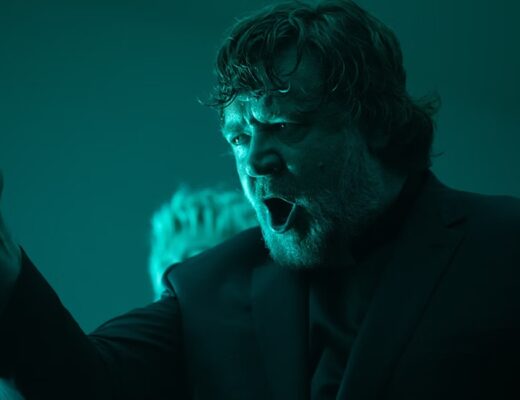How do you get away with the perfect murder? Easy: get someone else to do it for you. Such is the premise of Alfred Hitchcock’s 1951 thriller Strangers on a Train, a taut, Dostoyevskyian exploration of moral ambiguity. Based on a novel by Patricia Highsmith, Hitchcock weaves a recurring doubles motif throughout the film’s treatment of its two main characters, as well as in its visual language. It opens with a sequence of two men getting out of their cabs and boarding a train, edited so it appears they are walking towards each other. The flamboyant black-and-white saddle shoes belong to a charming and psychotic bachelor, Bruno Antony (a deliciously unctuous Robert Walker), while Guy Haines (Farley Granger), a semi-professional tennis player embroiled in marital drama, sports a pair of staid black brogues. Their chance encounter in the dining car sets in motion a series of events that implicates both men in murder, though only one actually commits the deed.
It’s easy to think of Bruno and Guy as opposites, but Hitchcock goes out of his way to depict their commonalities, even if these shared traits are buried beneath layers of repression and denial. Bruno is fascinated by Guy’s youth, athleticism, and straightforward, untrammeled heterosexuality. There’s an obsessive quality to the way he stalks Guy that seems to commingle desire with desperation. Following him to tennis matches and dinner parties, he obviously prefers to ingratiate himself into Guy’s inner circle than resort to outright blackmail.
Guy, on the other hand, with his tennis prowess and political aspirations, initially seems beyond reproach: what’s more respectable than dating a Senator’s daughter? But when his spiteful wife Miriam (Kasey Rogers) refuses to grant him a divorce so he can marry Ann Morton (Ruth Roman), his anger flares to the point of murderous rage. Nor does he ever truly disavow Bruno’s plot to “swap murders,” as initially outlined on the train. His nervous chuckles and incredulous smiles are purposely ambiguous; he has just as much to gain from his wife’s death as Bruno does from his father’s, even if he refuses to admit it. And by leaving his engraved lighter in the dining car, accidentally or otherwise, the two men are now inextricably bound together.
Highsmith would perfect her universe of intellectual psychopaths with the Ripley series; in Strangers on a Train, her debut, she is merely setting the wheels in motion. For his part, Hitchcock’s adaptation is filled with his trademark feints and maneuvers, which he deploys to upend audience expectations at almost every turn. He starts with the introduction of the men on the train. For all of Bruno’s shrewdness, it’s Guy who unwittingly initiates the conversation by accidentally jostling the other man’s foot in the dining car. Later, Hitchcock brilliantly manipulates sound and shadow to make it appear as though Bruno kills Miriam in the carnival’s dark, secluded Tunnel of Love. Instead, he strangles her on a grassy meadow, and the entire scene is shown as a reflection in her eyeglasses, which have fallen to the ground during their struggle. Just a few moments later, fleeing the scene of the crime, he pauses to help a blind man cross the street. This unexpected marriage of the polite and the perverse is quintessential Hitchcock (and Highsmith, for that matter.)
The film’s final third is a race against time, as Guy hurries through an important tennis match to stop Bruno from planting his lighter at the scene of the crime. Bruno, meanwhile, seemingly has the whole thing in the bag until he suddenly drops the lighter down a storm drain. Hitchcock twists these ordinary occurrences into moments of high suspense and uses them to add further dimension to his characters: Guy is literally fighting for his life, his desperation transmuted into the most savage tennis of his career, while Bruno is clawing on his hands and knees for something that will never belong to him.
This tension culminates at the carnival, where Bruno and Guy struggle atop a crazed, out-of-control carousel. With closeups of braying wooden horses and screaming children, it’s a ghoulish set piece that encapsulates Bruno’s frenzied, hopeless pursuit. This element was created by the film’s writers and allows for a spectacular action sequence and Hollywood ending that is at odds with Highsmith’s novel. But Hitchcock’s adaption, which the author would come to reject, is no less powerful for its deviations from the source material. Its unflinching, painstakingly calibrated depiction of moral decay is about as perfect as its characters are flawed.
Part of Kicking the Canon – The Film Canon.







